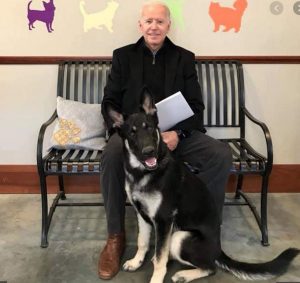 Many people wonder if German Shepherds are related to wolves. You may even wonder if your domestic GSD has a significant percentage of wolf genetics. After all, this breed does somewhat resemble a wolf in size and physical makeup. But is your dog really part wolf?
Many people wonder if German Shepherds are related to wolves. You may even wonder if your domestic GSD has a significant percentage of wolf genetics. After all, this breed does somewhat resemble a wolf in size and physical makeup. But is your dog really part wolf?
Are German Shepherds Part Wolf?
Once called the Alsatian Wolf Dog, German Shepherds are not part wolf. They are, however, descendants from gray wolves in the same way that most domestic dogs are. Domestic dogs are part of the biological family known as Canidae, which also includes species such as wolves, foxes, and dingoes.
Clearly, some dog breeds such as the German Shepherd, resemble wolves more than other breeds. No one would look at a miniature poodle, for instance, and think, “That dog is part wolf.” However, appearances can be deceiving.
So, how can we tell how closely related the modern day German Shepherd dog is to the wolf?
Origins Of The GSD Breed
Originally, in the 1800’s, the most common herding dogs were called “continental shepherd dogs.” This group was made up of the Belgian Shepherd, German Shepherd, and Dutch Shepherd dog breeds. However, the GSD was not yet recognized as an official breed.
The German Shepherd breed was officially recognized in 1899 when Max von Stephanitz founded The Society for the German Shepherd Dog. Von Stephnaitz began breeding with a Thuringian cross show dog, which became the original sire of the GSD breed.
The Thuringian breed somewhat resembles the gray wolf in appearance, exhibiting traits like erect ears, shaggy gray hair, and a curled tail. Much of the wolf-like appearance we see in the modern GSD can likely be attributed to Thuringian genes as DNA tests indicate that this breed is more directly descended from the gray wolf.
However, there are other contributors to the genetic makeup of the GSD, including the Wurttemberg Sheep Dog and the Swabian Service Dog.
The Wurttemberg Sheep Dog was introduced into the bloodline in order to temper the Thuringian’s tendency towards high energy and lack of focus. The Wurttemberg was more docile and easily trained. This breed also added a sturdier body structure, denser bones, and higher stamina to the GSD, all ideal traits for a working herd dog.
The Swabian Service Dog is the largest of the breeds used in the GSD bloodline. The Swabian added not only size, but also an even temper and a courageous personality, both traits the GSD is known for.
Has The Breed Changed Much Over Time?
There is some debate amongst breeders and owners as to whether the GSD breed has changed much since the late 1800’s. Some question whether or not more recent breeders have added additional wolf genetics to the line. However, there is no proof, either through paper or DNA tests, to validate this theory.
So, how closely related is your GSD to the wild gray wolf? Probably no more than most domestic dogs. However, you can see some of the characteristics of the wolf in your dog’s noble appearance and courageous personality.







